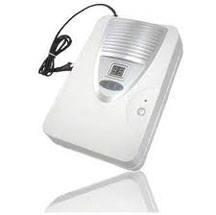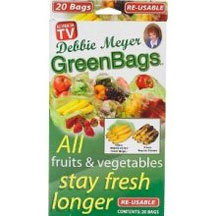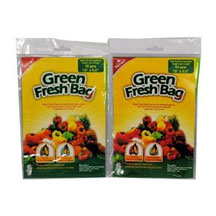Prep Those Greens Properly!
By Alice Osborne
 One good place to start is with the vegetable/crisper drawer of the refrigerator - managing it better, that is. We don't want to give up the veggies and salads, we just want to stop wasting them. If they're not prepped properly, or stored properly, or used up quickly enough, they go bad (aka ROT) and we end up throwing them out. (Is anyone relating to this scenario?)
One good place to start is with the vegetable/crisper drawer of the refrigerator - managing it better, that is. We don't want to give up the veggies and salads, we just want to stop wasting them. If they're not prepped properly, or stored properly, or used up quickly enough, they go bad (aka ROT) and we end up throwing them out. (Is anyone relating to this scenario?)
 And speaking of nutrient-dense foods, here are some good things to know about leafy greens:
And speaking of nutrient-dense foods, here are some good things to know about leafy greens:
 Red and dark green leafy vegetables are generally higher in nutrients than light-colored greens (think iceberg lettuce as a light-colored green). In fact, red leaf lettuce is considered the king of lettuces and has the most anti-oxidant compounds of all the lettuces available.
Red and dark green leafy vegetables are generally higher in nutrients than light-colored greens (think iceberg lettuce as a light-colored green). In fact, red leaf lettuce is considered the king of lettuces and has the most anti-oxidant compounds of all the lettuces available.
 When it comes to prepping properly, here's what the experts advise:
When it comes to prepping properly, here's what the experts advise:
• Always wash hands before preparing salads and make sure you are working with a clean cutting board.
• Wash lettuce just before using by running cold water over leaves. Leaves can be difficult to clean so immersing the leaves in a bowl of ice water for a few minutes helps loosen sand and dirt. Presoak lettuce and other greens for 10 minutes. After washing, blot dry with paper towels or use a salad spinner to remove excess moisture.
 Fit (Proctor & Gamble, Cincinnati, OH)
Fit (Proctor & Gamble, Cincinnati, OH)
 Ozone Water Purifier XT-301 (Air-Zone Inc., Leesburg, VA)
Ozone Water Purifier XT-301 (Air-Zone Inc., Leesburg, VA)
 J0-4 Multi-Functional Food Sterilizer (Indoor Purification Systems, Layton, UT)
J0-4 Multi-Functional Food Sterilizer (Indoor Purification Systems, Layton, UT)
Fit washes got rid of roughly the same amount of microbes as distilled water. Both Fit and distilled water reduced the level of residual pesticides compared to the unwashed samples. Both ozone systems - the Ozone Water Purifier XT-301 and the J0-4 Multi-Functional Food Sterilizer - removed microbes. However, the distilled water wash was more effective than either of the ozone washes. Because this equipment is costly and produce washes are costly, the University researchers advise consumers to wash fresh fruits and vegetables with distilled water by soaking all produce for one to two minutes to reduce the risk of food-borne illness. And why use distilled water? According to the Maine researchers, distilled or bottled water has been filtered and purified to remove contaminants. They do concede, however, that you can also used very clean cold tap water to clean produce instead of distilled water. OK - good to know, and validating as well. I'm stickin' with plain, cold tap water.

 And while you can store your cleaned greens in your salad spinner as mentioned above, my favorite storage technique uses the green produce bags found in most produce departments now. I soak my greens, drain them well, and soak them again. After these two soakings, I spin them as dry as I can in the salad spinner, then I layer them between paper towels in one of these large green plastic produce bags.
And while you can store your cleaned greens in your salad spinner as mentioned above, my favorite storage technique uses the green produce bags found in most produce departments now. I soak my greens, drain them well, and soak them again. After these two soakings, I spin them as dry as I can in the salad spinner, then I layer them between paper towels in one of these large green plastic produce bags.
 So now that we know we should keep buying greens (expensive or not), and we know how to clean and store them, HOW do we use them up quickly enough? I always include a handful in my morning green drink, and then "a salad-a-day" is my motto. Also, they are just delicious chopped up and included in veggie wraps. And some people skip the tortilla entirely and just wrap their wrap in lettuce.
So now that we know we should keep buying greens (expensive or not), and we know how to clean and store them, HOW do we use them up quickly enough? I always include a handful in my morning green drink, and then "a salad-a-day" is my motto. Also, they are just delicious chopped up and included in veggie wraps. And some people skip the tortilla entirely and just wrap their wrap in lettuce.
 The point is though, to remember that they're snuggled into the vegetable/crisper drawer and be diligent in building our meals around them. This is the way to continue to eat well and afford it too!
The point is though, to remember that they're snuggled into the vegetable/crisper drawer and be diligent in building our meals around them. This is the way to continue to eat well and afford it too!

